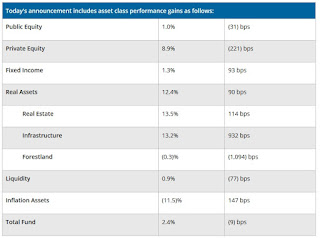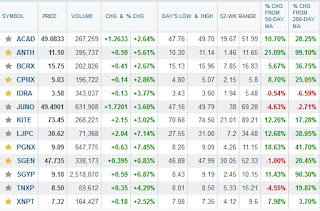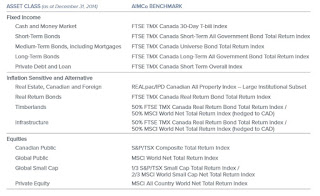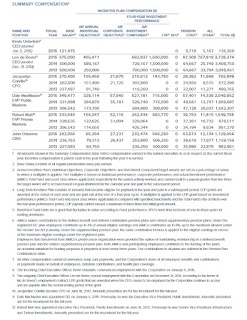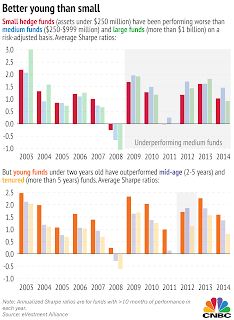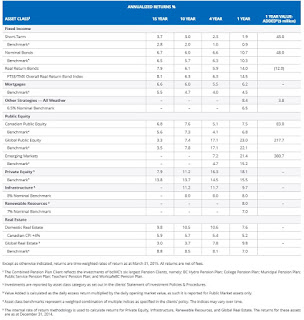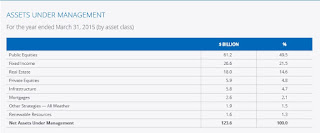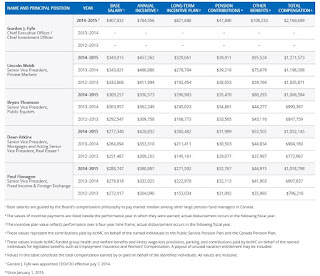Jamie McGeever of Reuters reports, Deflation threat returns to stalk investors and policymakers:
No wonder Treasuries are becoming the stars of the financial markets as tumbling commodities and stocks raise concern inflation will turn to deflation.
The bursting of the China bubble is wreaking havoc on energy and commodity shares as well as commodity currencies. I wrote about it on Friday in my comment on an ominous sign from commodities.
But I also warned my readers:
Also, keep in mind, there is no inflation and no need for the Fed to raise rates. In fact, with rates at historic lows and commodities tanking because of weakness out of China, the Fed prefers to err on the side caution and inflation than risk another global financial crisis and a prolonged period of global deflation.
Markets are already starting to look ahead and pricing in better global growth from all this monetary stimulus. On Tuesday, you're seeing some big moves in shares of the Metals and Mining ETF (XME), led by Freeport-McMoRan (FCX).
Again, these are violent countertrend moves that are a combination of short covering and buying activity from investors and traders who felt the recent rout in these shares was way overdone. You can trade these countertrend rallies, especially if global indicators start turning up in the weeks ahead, but be careful not to overstay your welcome. This is the last leg up before markets turn south.
Below, global bond manager Robert Kessler recently appeared on WealthTrack with Consuelo Mack to discuss why he is sticking with his decade long, bullish view on Treasuries and says the Federal Reserve is in “no position to raise interest rates.”
I agree with Mr. Kessler as well as with Van Hoisington and Lacy Hunt of Hoisington Investment Management who in their latest quarterly economic outlook end by stating:
Fear of falling prices in a debt-laden world has returned to unnerve investors and central banks alike, as the slide on oil and commodity markets that set off a deflation scare last year has resumed with a vengeance.Regular readers of my blog know my thoughts on global deflation. It was never dead to begin with. It's still there, lurking in the background, except the center of global deflation has shifted from the eurozone to China:
This summer's Shanghai stock market shock is also deepening anxiety that a cooling of the Chinese economy will lead to sharply lower global growth, while weak consumer prices are undermining assumptions that U.S. interest rates will soon rise.
By this spring, the deflation scare had been fading, with investors confident the plunge in oil prices was over. They moved out of the safety of government bonds, pushing up yields in the hope that easy central bank money would gradually reflate the world economy. Victory over deflation could then be declared.
However, the Thomson Reuters Commodity Research Bureau index has plummeted 10 percent in July to its lowest level since the nadir of the global recession in early 2009.
Crucially, this benchmark index has breached the lows it hit in March, casting doubt on expectations that raw materials costs would soon cease to drag down annual consumer inflation rates.
"We're worried that the recent weakness in commodity prices could signal a loss of momentum in global growth that we're not projecting," said Bruce Kasman, global chief economist at JP Morgan in New York.
JP Morgan has yet to adjust its official projections, but Kasman said global growth in the second quarter is estimated at only 2 percent, a percentage point below his forecast at the start of the quarter.
Prolonged deflation is damaging, especially for the developed economies where household, corporate and government debt remains so high. If consumer prices fall, the real value of this debt rises, making it increasingly difficult to repay.
Consumer inflation is already near zero across the world. Even the recoveries underway in the United States, Britain and continental Europe do not seem strong enough to generate significant price pressures as economies in the emerging world, led by China, slow sharply.
This complicates - and possibly delays - interest rate rises planned by the U.S. Federal Reserve and Bank of England, which markets had assumed would happen by early 2016.
The dollar and sterling have risen in anticipation of higher rates, moves that are themselves deflationary as they lower the price of imports. "Lower goods prices and a stronger dollar could slow the Fed's path. The dollar matters," said Kasman.
MAXIMUM UNCERTAINTY
Global inflation was just 1.6 percent in the second quarter, according to JP Morgan, down from 2.0 percent at the end of last year. While it is forecast to rise throughout 2015, this assumes commodity prices and economic growth don't weaken further.
Investors are left wondering where to put their money. Like commodities, emerging markets are suffering heavy selling and rising volatility; growing caution among investors could also hurt stocks, and bonds are near their most expensive in decades.
Latest fund flow data from Bank of America Merrill Lynch shows investors are starting to play "deflation trades". In the week ending July 22 they dumped billions of dollars' worth of gold, commodities and emerging market assets, BAML said.
Much of the attention is on China, the world's second largest economy which kept commodity prices high during its boom years that now seem to be fading.
Shanghai stocks lost a third of their value in the three weeks to July 9 before staging a government-inspired recovery. That was shattered by an 8.5 percent plunge on Monday, the biggest one-day loss since February 2007.
Capital is flooding out of China. Net outflows totalled as much as $220 billion in the second quarter, Goldman Sachs estimates, bringing the total in the past year to as much as $761 billion.
Bridgewater Associates, the world's largest hedge fund, reckons the impact of the financial sector on Chinese economic growth will flip from a positive 2 percent over the past year to zero or negative in the third quarter.
Last week, it issued a gloomy note on China, saying: "We are now at the point of maximum uncertainty. There are now no safe places to invest and the environment looks riskier."
This creates problems for both China's central bank and counterparts in the developed world which target inflation, such as the Fed, BoE and European Central Bank.
British inflation is zero, well short of the BoE's 2 percent target. The U.S. rate on the Fed's favoured measure is 1.2 percent, under its 2 percent target over three years. All this undermines the case for higher interest rates.
Last year's deflation scare was most acute in the euro zone, prompting the ECB to start pumping 1 trillion euros into the economy in March. In a new paper on Monday, the ECB warned that the war on deflation was not yet over.
"It remains too early to identify a turning point in underlying inflation from a statistical point of view. More data are required for the signal for such a turning point to become strong enough," the paper said.
In spite of aggressive monetary easing by major central banks around the world, since 2008/09 financial crisis, inflation is yet to reach sustainable level. Some economies like countries in Euro zone, Japan still struggling to beat deflationary threat.Indeed, if China heads into a prolonged bout of deflation, the world will keep feeling the chill of a deflationary threat. It will pretty much export deflation everywhere, including the United States.
What might be fueling global deflation?
Relentless rout in Commodity prices adding downside pressure to global inflation. Bloomberg commodity index has reached 13 year low and commodity sell off is quite broad based, covering all sectors - energy, agricultural, industrial, precious metals.And China is the culprit behind this major commodity rout.
- Oil is trading near its lowest since financial crisis.
- Gold is trading close to its lowest level in five years.
- Sugar has fallen to seven year low.
- Milk prices have dropped 65% in last 12 months.
- Copper is reeling to its lowest, since financial crisis, down close to 28% in last 1 year.
Before the financial crisis, ships loaded with commodities were heading to China, as the giant was consuming more than half of global production in some.
In 2012, China was consuming about more than 50% of global iron ore, aluminum and nickel. Copper and zinc consumption was about 50% of global production.
This has led to some serious investments and capacity increase in commodity segment, which is leading to today's excess capacity.
China was able to maintain some growth prospects even after the crisis till 2011/13, after which its economy have started to crumble at sharp pace.
It now turns out that in 2015, Chinese economic activities have slowed to multi decade low and indicators are pointing to even lower.
Last Friday, preliminary reading for July in HSBC PMI came at 48.2, lowest in 15 months, suggesting further slowdown.
World's is likely to keep feeling the chill of a deflationary threat as world's second largest economy slows down further.
No wonder Treasuries are becoming the stars of the financial markets as tumbling commodities and stocks raise concern inflation will turn to deflation.
The bursting of the China bubble is wreaking havoc on energy and commodity shares as well as commodity currencies. I wrote about it on Friday in my comment on an ominous sign from commodities.
But I also warned my readers:
[...] go back to carefully read my comments on Bridgewater turning bearish on China and a tale of two markets. We could be setting up for some nice countertrend rallies in Chinese (FXI), emerging markets (EEM), energy (XLE), commodities (GSG), metals and mining (XME), and gold (GLD) shares in the next few months.Keep all this in mind as the Fed meets on Tuesday and Wednesday to discuss any changes to its monetary policy. I still maintain the Fed won't make a monumental mistake of raising rates this year because it will risk a crisis in emerging markets and send the mighty greenback soaring higher, putting further pressure on commodities and raising the risks of global deflation.
How is this possible? First, if markets deteriorate further, the Fed won't hike rates this year. Second, real rates in emerging markets remain too high relative to real rates in the developed world, so expect more central bank easing in emerging markets in the near future. Third, the reflationistas may be temporarily right, global growth will likely come in stronger than anticipated in the next few quarters, which will help boost energy and commodity shares.
But make no mistake, my long-term forecast of global deflation remains intact which is why even though I might be tempted to trade countertrend rallies in energy and commodities, I keep steering clear of these sectors in favor of tech (QQQ) and biotech (IBB and XBI).
Also, keep in mind, there is no inflation and no need for the Fed to raise rates. In fact, with rates at historic lows and commodities tanking because of weakness out of China, the Fed prefers to err on the side caution and inflation than risk another global financial crisis and a prolonged period of global deflation.
Markets are already starting to look ahead and pricing in better global growth from all this monetary stimulus. On Tuesday, you're seeing some big moves in shares of the Metals and Mining ETF (XME), led by Freeport-McMoRan (FCX).
Again, these are violent countertrend moves that are a combination of short covering and buying activity from investors and traders who felt the recent rout in these shares was way overdone. You can trade these countertrend rallies, especially if global indicators start turning up in the weeks ahead, but be careful not to overstay your welcome. This is the last leg up before markets turn south.
Below, global bond manager Robert Kessler recently appeared on WealthTrack with Consuelo Mack to discuss why he is sticking with his decade long, bullish view on Treasuries and says the Federal Reserve is in “no position to raise interest rates.”
I agree with Mr. Kessler as well as with Van Hoisington and Lacy Hunt of Hoisington Investment Management who in their latest quarterly economic outlook end by stating:
"While Treasury bond yields have repeatedly shown the ability to rise in response to a multitude of short-run concerns that fade in and out of the bond market on a regular basis, the secular low in Treasury bond yields is not likely to occur until inflation troughs and real yields are well below long-run mean values. We therefore continue to comfortably hold our long-held position in long-term Treasury securities."Keep this in mind when Wall Street talking heads tell you deflation is dead. Deflation isn't dead, it never was dead. It's there, ongoing, and central banks around the world are petrified, trying hard to stimulate the global economy before it becomes entrenched.


